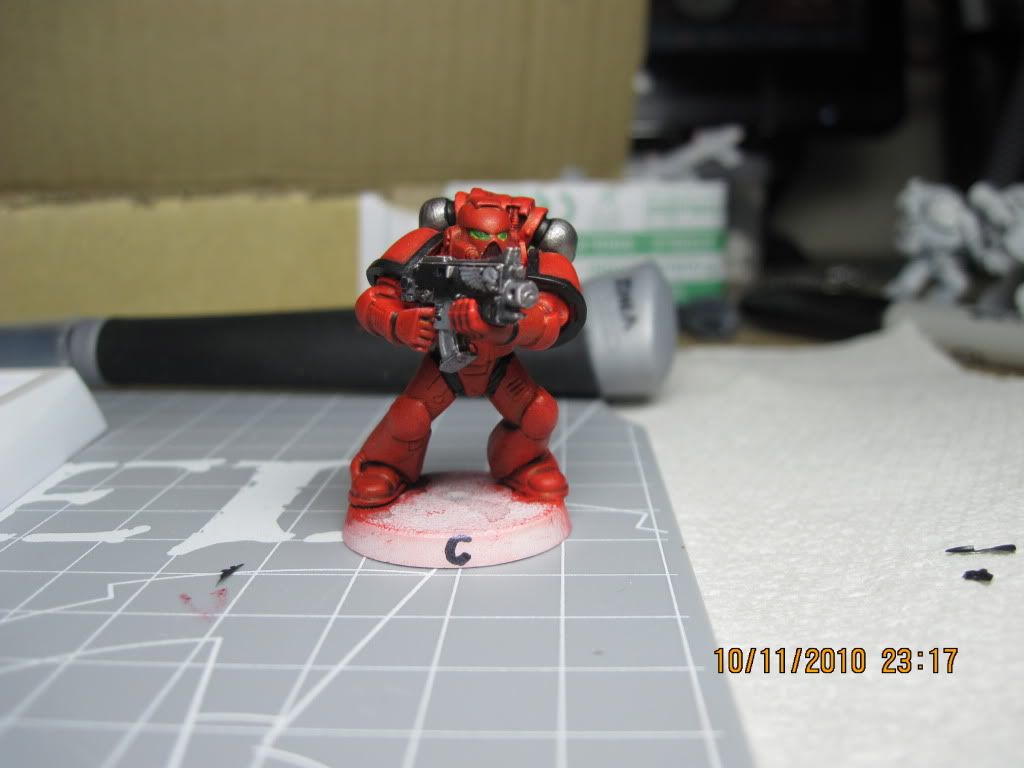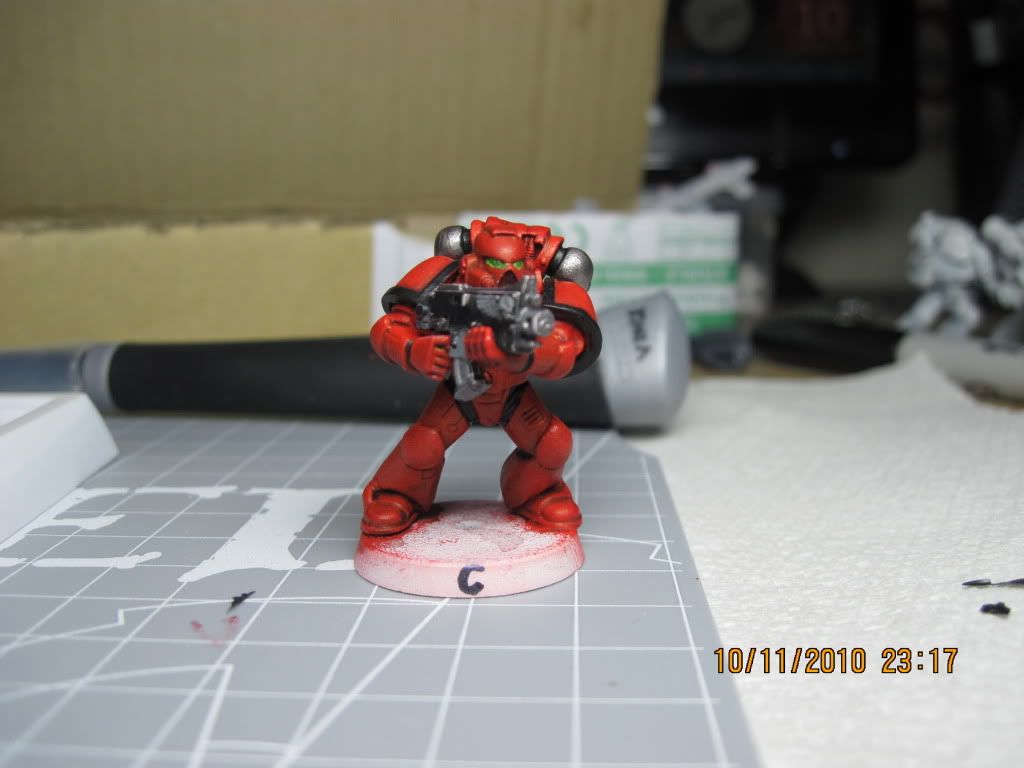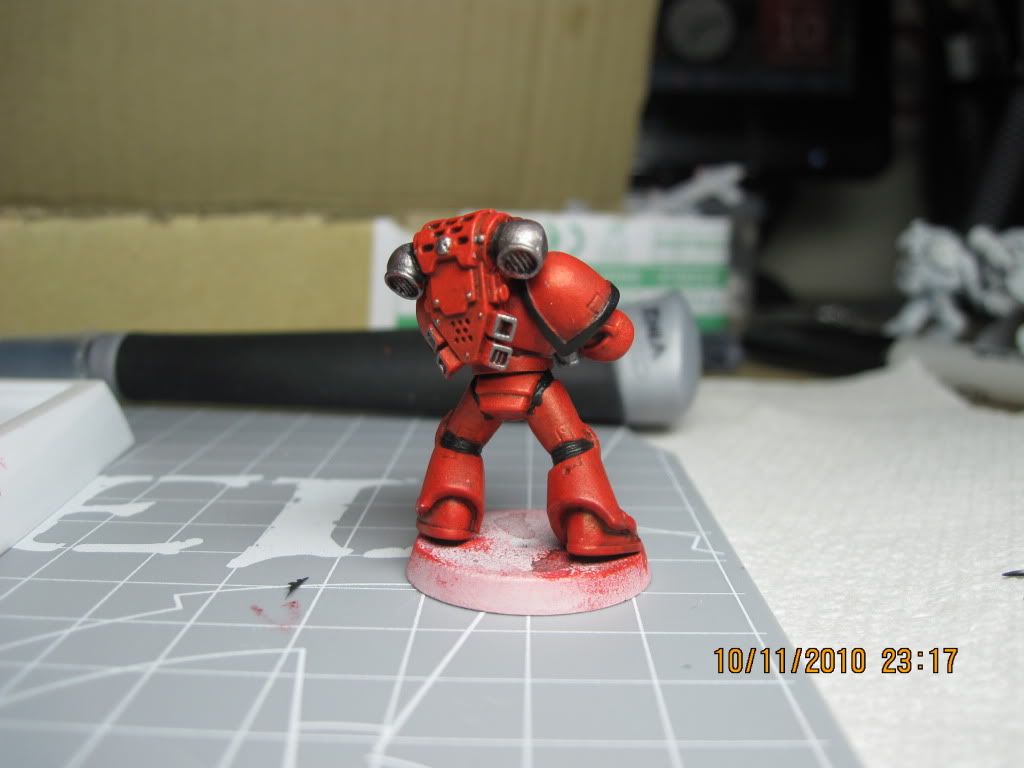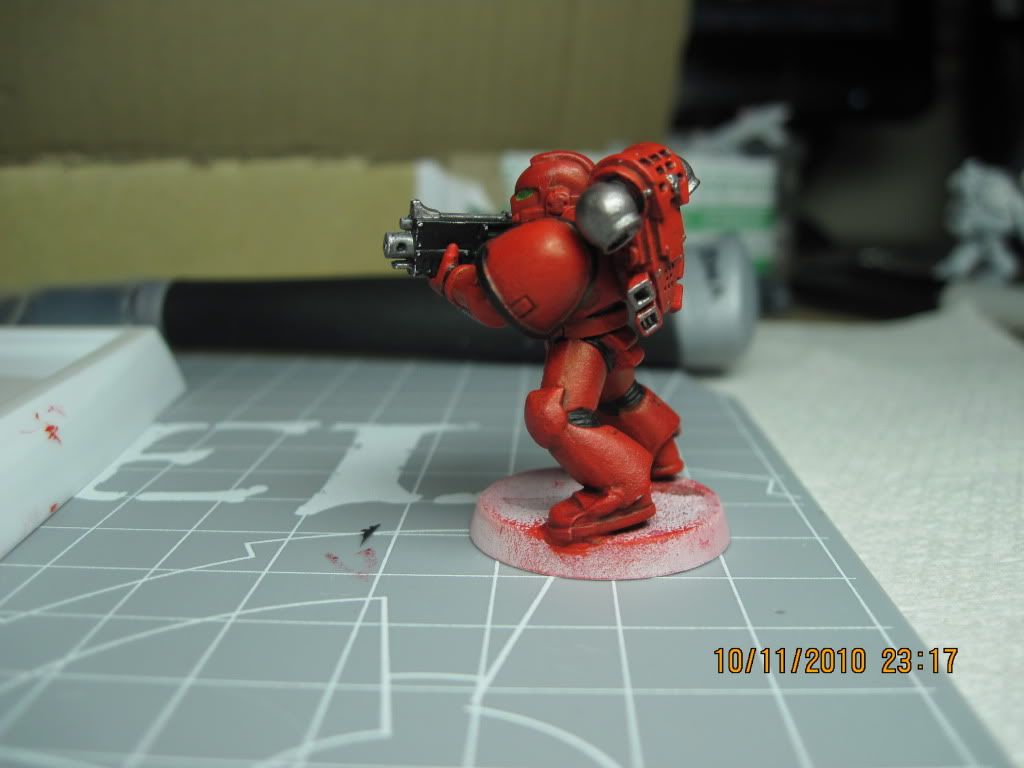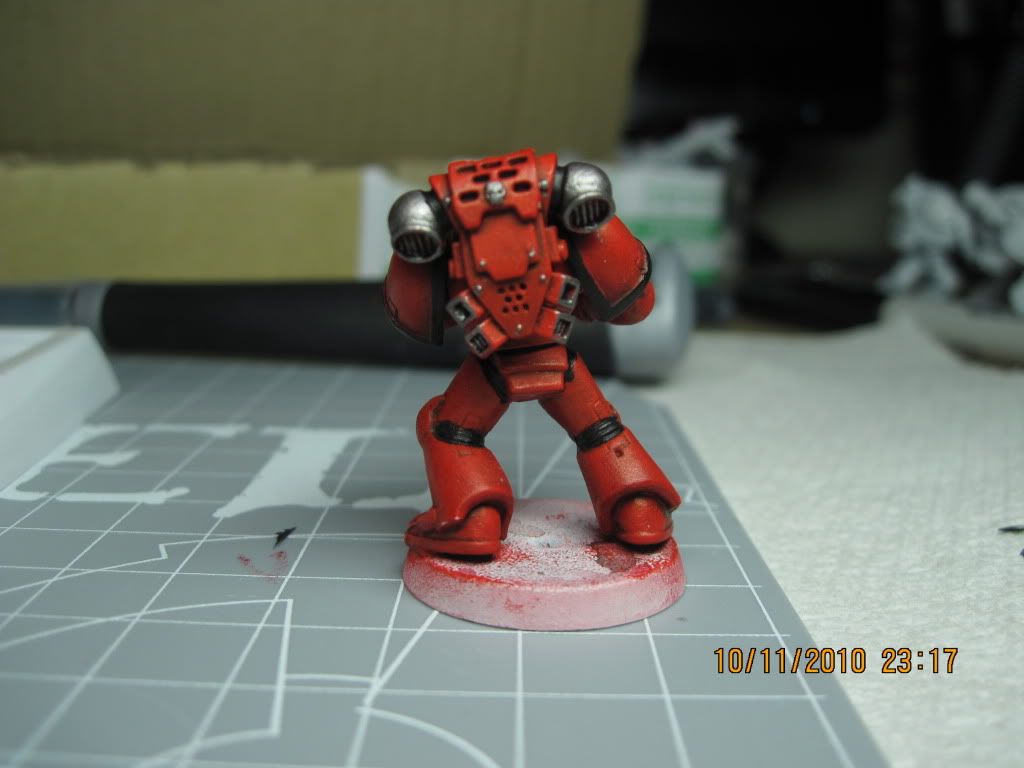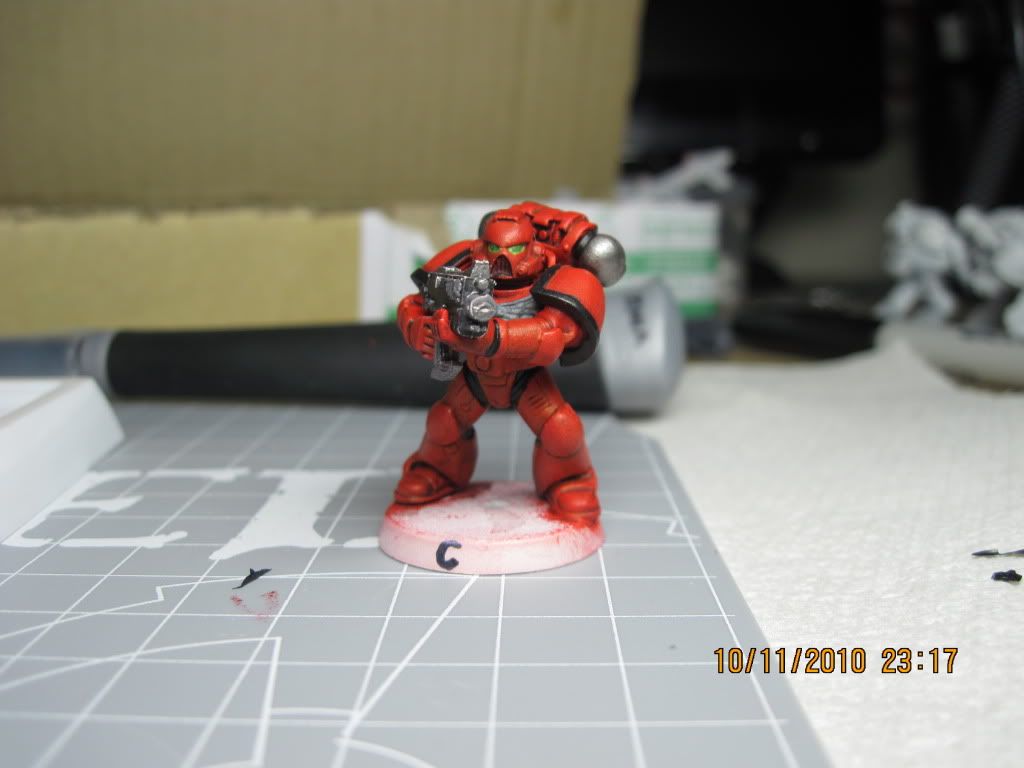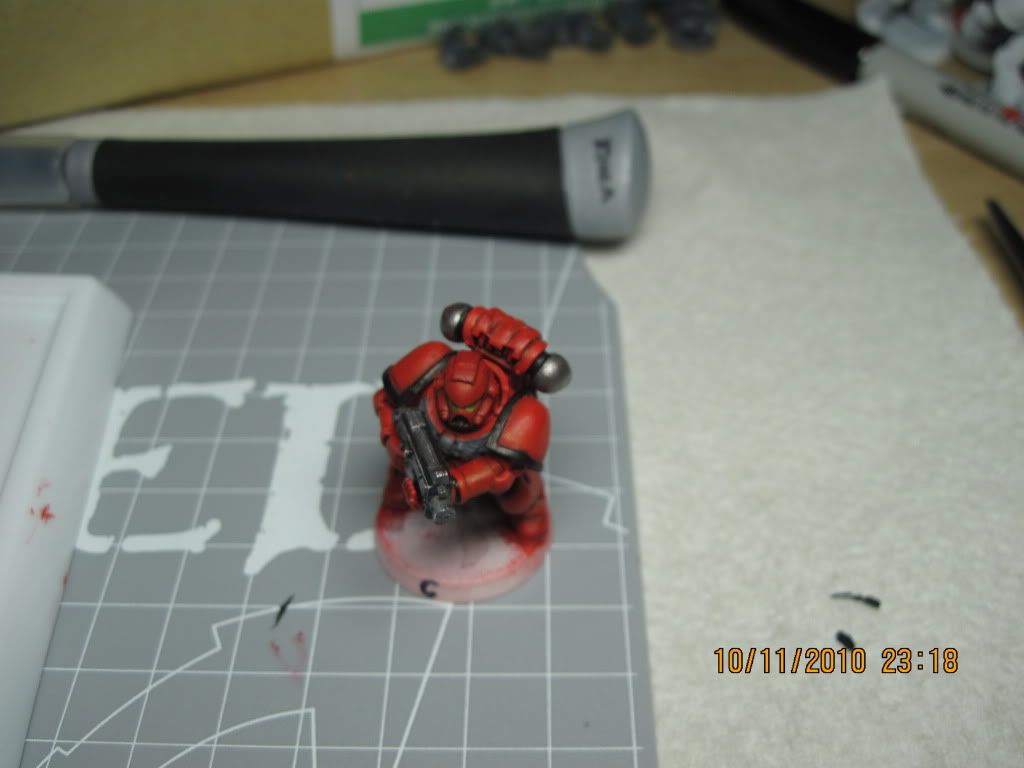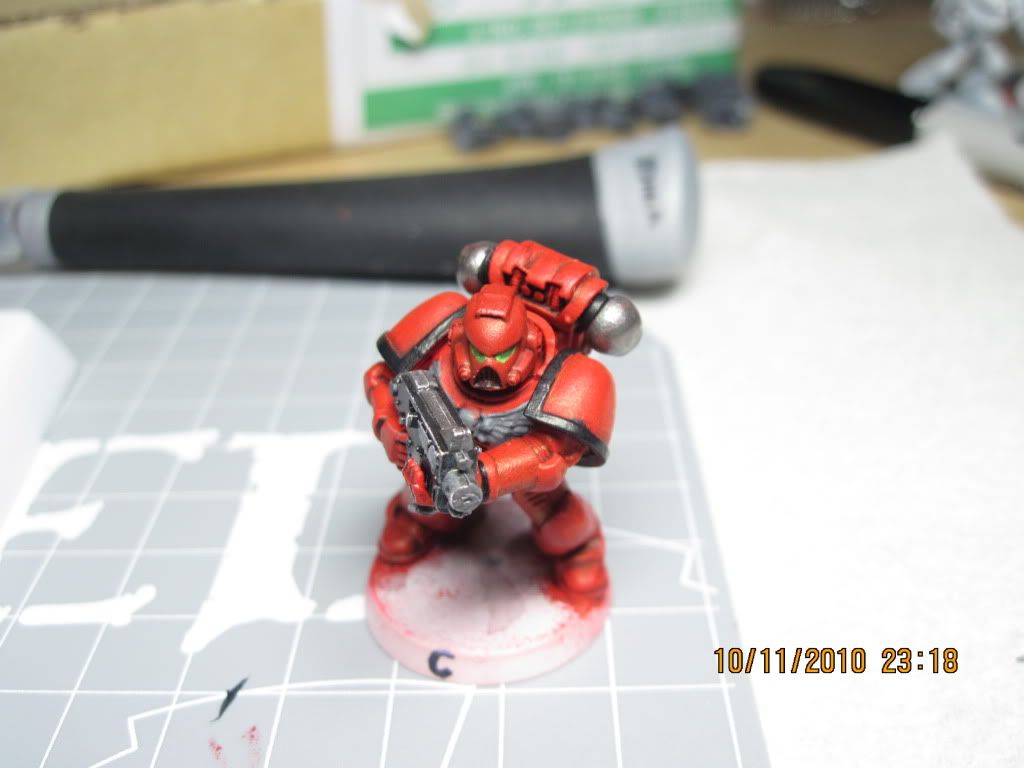first of all, welcome to the hobby
second, WOW, that marine looks way better than my first mini
third, sorry... but this post has gotten a bit longer than i planned

and now that we've got the formalities out of the way:
how to improve:
1) practice and keep pushing yourself
2) keep visiting this page (there's so much knowledge and advise on here)
3) find others near you who paint and get together
4) searc youtube, there's loads of tutorials on there
5) as others have said, you need more depth, shades and highlight.
shading is actually quite easy, one neat trick you might like to try:
take the marine you've painted, dip it into a glass of clean water, put it down and study where the water pools on the mini.
where the water pools (and takes longest to dry) is where the paint should be a "shade" darker.
now take a wash (black, brown) and paint only the parts of the mini where the water took longest to dry
for the next step up in skill you might want to dilute the wash and give it several coats, gently decreasing the area to which you aply the wash
and of course you can apply a wash onto an entire model, but you'll darken all of it, meaning you have to paint the mid-tone again. applying a wash only where you want it makes much more sense
Highlighting isn't hard either (actually, it is, but you'll learn to blend eventually

)
there's an easy way and a hard way, first the easy way, edge highlight:
take a color 1 shade lighter than your base mid-tone, take a small brush and paint a thin line onto any sharp edge you see.
you're done

to make it a bit more interesting, go another shade lighter and paint only the most prominent points
the next step would be to add a transition to the line,
this works pretty much the same as above, just with more moisture.
i use paint straight out of the pot, diluted by licking my brush
i than place an edge highlight, starting at the most prominent point, making sure my brush leaves behing a little bit less paint with every milimeter, repeat until it looks good XD
now do the same with a lighter color as described above.
the hard way would be to paint the upper part of a block with a highlight color and the lower part with a shading color, with a nice smooth transition between these colors and the mid-tone in between
but that would be blending, something you'll learn when you're ready

5) something elde that's sorely lacking is you basing skills, i guess you like your blood angels to fight over a bloody frozen planet of ice, but i'd pick something more dramatic
just kidding, but a base makes a mini, it adds a background story
that said, here's another tip: don't drybrush

of course, everybody sins XD
I used to drybrush pretty much everything, but it's too imprecise. these days i only use drybrushing to paint TTQ metallics (quick and easy) or just a really light dusting of boltgun metal onto a black primed miniature, this makes the edges shiny, bringing out all the details.
one of the best things i've ever done was to paint an entire mini without drybrushing, just mixing lighter and lighter shades of color and applying them to smaller and smaller areas. taught me a lot about blending and brush control.
Keep on painting,
Mourner

